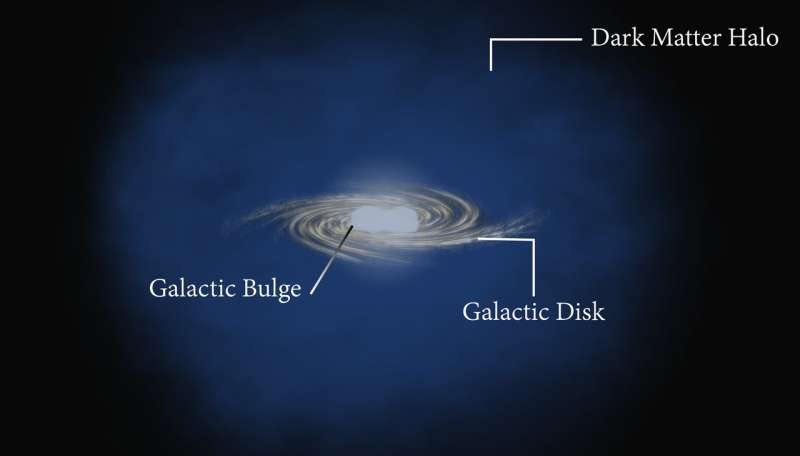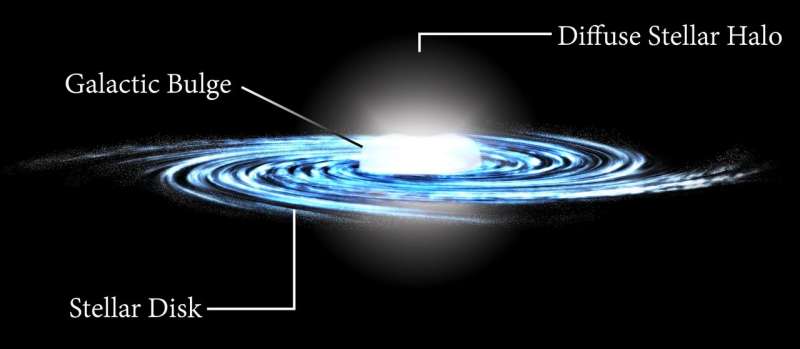March 13, 2018 report
New study suggests galactic bulge emissions not due to dark matter

A team of researchers from the U.S., New Zealand, Australia and Germany has found evidence suggesting that a type of star formation near the center of the Milky Way is responsible for large gamma ray emissions, not dark matter. In their paper published in the journal Nature Astronomy, the group describes their study of the stars in the formation, what they found, and what it could mean for dark matter theory.
Over the past several years, a consensus of sorts has emerged among astrophysicists to explain the large gamma ray emissions from the center of the Milky Way—they are likely due to dark matter particles (WIMPs) bumping into each other or with regular matter, it was theorized. But in this new effort, the researchers report evidence of another source, casting doubt on dark matter as the likely cause of the emissions.
The researchers have been studying data from the Fermi Gamma-Ray Space Telescope, which has been in orbit for the past decade. They were able to see that the gamma rays actually mirrored the distribution of stars near the center of the galaxy—they were formed in the shape of an X, not a sphere as would be expected if it were caused by dark matter interactions. In building a model to recreate what they had found, the team discovered that a more likely explanation was a collection of millisecond pulsars (rapidly spinning neutron stars)—their combined emissions appeared to have merged to create the signal that was originally attributed to dark matter—the new source may be less exciting, they note, but at least it is explainable in reasonably concrete terms.

The researchers note that while their findings offer the most likely explanation for the gamma ray signals, which constitutes progress in understanding our own galaxy, they also put a bit of a damper on enthusiasm for dark matter—the case for it goes back to things like light bending in odd ways, or the strange behavior observed in some galaxies, which do not offer much to go on.
More information: Oscar Macias et al. Galactic bulge preferred over dark matter for the Galactic centre gamma-ray excess, Nature Astronomy (2018). DOI: 10.1038/s41550-018-0414-3
Abstract
An anomalous gamma-ray excess emission has been found in the Fermi Large Area Telescope data covering the centre of the Galaxy. Several theories have been proposed for this 'Galactic centre excess'. They include self-annihilation of dark-matter particles4, an unresolved population of millisecond pulsars, an unresolved population of young pulsars, or a series of burst events. Here, we report on an analysis that exploits hydrodynamical modelling to register the position of interstellar gas associated with diffuse Galactic gamma-ray emission. We find evidence that the Galactic centre excess gamma rays are statistically better described by the stellar over-density in the Galactic bulge and the nuclear stellar bulge, rather than a spherical excess. Given its non-spherical nature, we argue that the Galactic centre excess is not a dark-matter phenomenon but rather associated with the stellar population of the Galactic bulge and the nuclear bulge.
Journal information: Nature Astronomy
© 2018 Phys.org





















